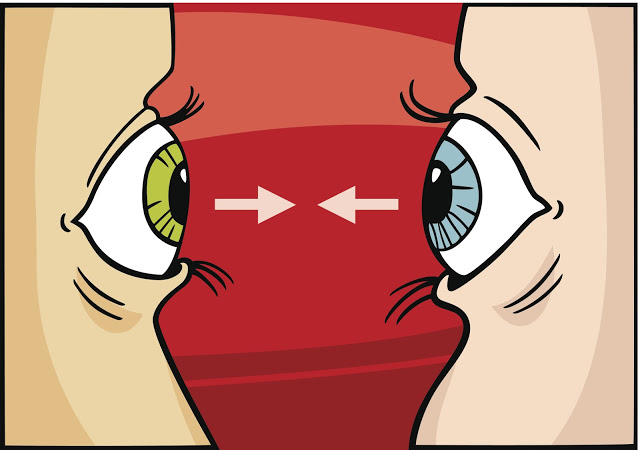The Unification Epicenter of True Lightworkers
Staring into a loved one’s eyes can often be romantic, entrancing and in my personal opinion, deeply connecting. However, 10 minutes is an awfully long time. I’m not sure I could stare into my other half’s eyes for longer than 30 seconds without desperately wanting to kiss, laugh or do something more physical to break the intense tension that’s built.
In light of this, the idea of staring into a strangers eyes for 10 minutes without a change in facial expression or even the hint of a smile is completely foreign to me but I had no idea the effect it could actually have on people.
Italian psychologist, Giovanni Caputo, recruited 20 young adults, 15 of which were women, to form pairs. Each pairs sat opposite each other, one metre apart, in a large and dimly lit room. I say ‘dimly lit’, as with all things experiment, it was actually a very precise lighting of 0.8lx which was selected to allow detailed perception of the fine face traits but attenuated colour perception.
From here, the task for the participants was fairly simple: stare in each other’s eyes for 10 minutes, maintaining a neutral facial expression whilst you do. Sounds simple enough right, what could possibly happen from something as simple as this?
In the next room, 20 further participants, the ‘control group’, were asked to stare for 10 minutes but instead of staring at another person, they were asked to face their chair to the wall.
When the ten minutes were up, both groups were required to fill out questionnaires: the first being an 18 item test of dissociative states and the other asked questions about their experience of the other person’s face, or their own face/the wall if they were in the control group.
Interestingly, the participants in the eye-staring group claimed they’d had a compelling experience, unlike anything they’d ever felt before. Also, scoring higher on all questionnaires in comparison to the control group. The eye-staring group test results showed reduced colour intensity, sounds seeming quieter or louder than expected, being spaced out and time seemingly dragging on.
In addition, 90% of the group agreed they’d seen deformed facial traits, with 75% claiming they’d seen a monster and 50% claiming they’d seen aspects of their own face in their partner’s. I wonder if the monster/own face claim saw any crossovers? No, I’m sure they were all lovely.
Caputo, the brain behind the experiment, thinks the facial hallucinations are a kind of rebound effect, as the participants in the eye-staring group returned to “reality” after dissociating. Of course, this is largely speculation and although the eye-staring group scored higher in the disassociative tests, on average, no items on the scale scored higher than a 2.45 which is relatively low when you consider the scale is 0-5, with 5 being the highest.
Still, comparing the questionnaire scores in the current study with those reported in his past research, Caputo says that what he calls “interpersonal gazing” has a more powerful dissociative effect than staring into a mirror.
by Melissa Chapman; viralthread
Views: 41
Comment
© 2025 Created by Besimi.
Powered by
![]()



You need to be a member of Saviors Of Earth to add comments!
Join Saviors Of Earth